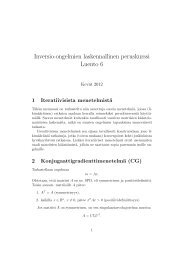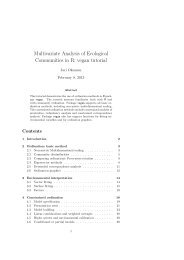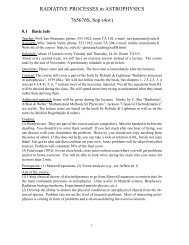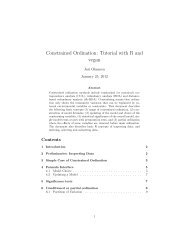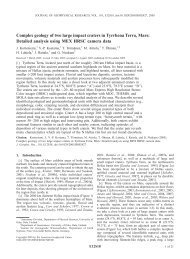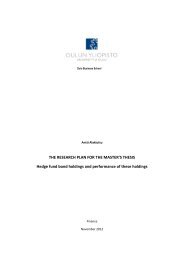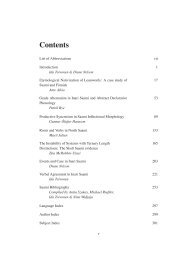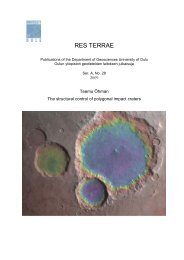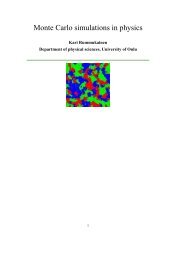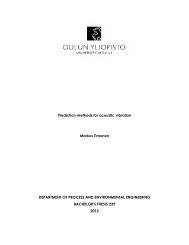Juha Köykkä - Oulu
Juha Köykkä - Oulu
Juha Köykkä - Oulu
- TAGS
- juha
- oulu
- cc.oulu.fi
You also want an ePaper? Increase the reach of your titles
YUMPU automatically turns print PDFs into web optimized ePapers that Google loves.
Res Terrae, Ser. A 32, J. <strong>Köykkä</strong>, Sedimentology of the Mesoproterozoic Telemark basin-fills, South Norway: implications for<br />
sedimentation processes, depositional environments and tectonic evolution<br />
(2001, 2002, 2005, 2008b) have been correlating, modeling and studying the evolution<br />
of continental building in the Sveconorwegian orogeny in southern Norway. More re-<br />
cently, new evidence regarding the Telemark tectonic evolution is presented by Corfu<br />
and Laajoki (2008), and short notes presented by Lamminen et al. (2009a, 2009b).<br />
The geochemistry of volcanism, metamorphism, and tectonism in the Telemark<br />
area have mainly been studied by Brewer and Atkin (1987, 1989), Atkin and Brewer<br />
(1990), Brewer and Menuge (1998), and Menuge and Brewer (1996). These studies<br />
were based on isotope geochemistry and whole-rock geochemistry. The only structural<br />
research from the Telemark area are mostly based on studies of major fault zones, me-<br />
tamorphic events and field evidence by Sigmond (1985), Starmer (1993), and Sigmond<br />
et al. (1997).<br />
No comprehensive sedimentological studies of the Telemark area have been made.<br />
Some studies briefly describe the occurrence of different sedimentary structures with-<br />
out offering any detailed analyses (e.g., Wyckoff, 1934; Dons, 1959, 1960a, 1960b,<br />
1962, 1963; Singh, 1969; Dahlgren, 1990b; Andersen and Laajoki, 2003). Wyckoff<br />
(1934) describes lithology and sedimentary features in the Mount Gausta area. Dons<br />
(1960a, 1960b, 1962, 1963) noted the abundance of ripple marks, cross-bedding and<br />
shrinkage cracks in Telemark area, but without making any interpretation of their ori-<br />
gin. In addition, Dons (1959) describes nodule-rich deposits in the Dalaå sandstone as<br />
possible fossils (Telemarkites Enigmaticus). Singh (1969) interprets the Telemark de-<br />
positions as a possible slow subsidence, shallow water basin with tidal influence.<br />
Dahlgren (1990b) and Andersen and Laajoki (2003) briefly states and interprets some<br />
of the conglomerate deposits as alluvial fan debris flows, but no details were given.<br />
The only detailed sedimentological studies from the Telemark area prior to this study<br />
are unpublished M.Sc. theses by Lamminen (2005) and <strong>Köykkä</strong> (2006a) and a few<br />
congress abstracts (Lamminen, 2004, 2006; <strong>Köykkä</strong>, 2006b, 2006c).<br />
14



